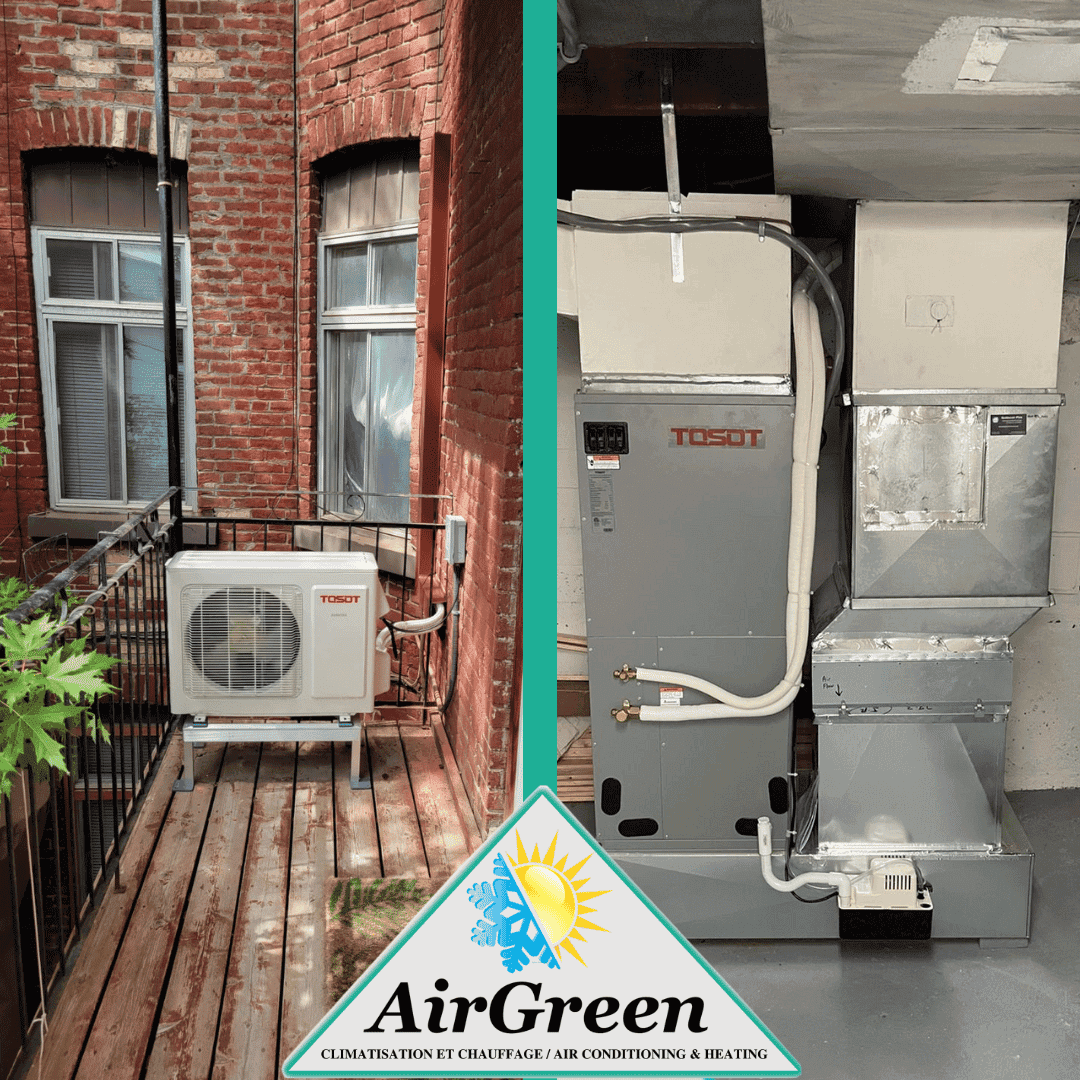At AirGreen, our mission is to help you meet the specific needs of your home. If you want to choose between a central heat pump or a mini-split one, there are several factors to consider. We will guide you through some recommendations that will help you in your choice.
It is important to understand that both types of systems work very well for Quebec homes. Obviously, for the majority of owners, the bottom line comes down to the comparison of the costs of each option.
As a general rule, we recommend :
- If your home does not contain ventilation ducts, choose the mini-split system.
- If your home already contains ventilation ducts, opt for the central system.
At AirGreen, we are aware that the initial cost is only one factor among many. In order to help you make a more illuminating choice, we will compare central and mural systems on three ways:
- Cooling and heating capacity
- Initial cost
- Operational cost
Are you looking for a recommendation from one of our technical specialists? Schedule an appointment today, it's Free!
Central or mini-split: cooling and heating capacity
Central systems are designed to cool and heat an entire house. A mini-split system can be installed for a single room as it can be installed for an entire dwelling, depending on the selected BTU capacity chosen.

A basic representation of a wall-to-wall mini-split installation.
A wall-mounted heat pump consists of an outdoor compressor and at least one indoor unit. Depending on the specific needs of a dwelling, minis-split systems may add additional interior units. When a compressor is installed to serve several indoor machines, it is called a multi-zone heat pump.
As a general rule, a wall-mounted heat pump is recommended for air conditioning and heating an apartment or a large part of a multi-storey dwelling.
For large homes, the decision will normally come down to the presence or absence of ventilation ducts. For homes built without ducts, it can be difficult to justify an additional expense to install ducts even before installing the heat pump itself.
Central or mini-split: the initial cost
If your home already contains a network of ventilation ducts, it is almost always better to install a central heat pump. Although a central heat pump is on average more expensive than a wall-mounted heat pump, ventilation ducts will be able to optimize heating and cooling and reduce operational costs.
On the other hand, if your home does not already have ducts, you must add the cost of installing them to the costs of installing the heat pump. For this reason, the initial cost of installing a central system will depend on your home. If you don't have ducts and do not plan on undertaking significant renovation works, it is better to opt for a wall-mounted heat-pump.
Central or mini-split: the operational cost
Having looked at installation costs, it is also necessary to consider the difference between the operating costs of each type of heat pump.
If the ventilation ducts in your home are in excellent condition (which is not often the case), a heat pump will have about the same operational cost as a wall mounted one. However, on average, a central system costs more to operate than a wall system of equivalent capacity and efficiency. This difference occurs due to leaks, holes and poor connections in the ventilation. These sources of air leakage can mean a loss of up to 30% of air conditioning or heated.
If you are looking for more personalized advice, schedule an appointment with one of our professionals, it's free!

